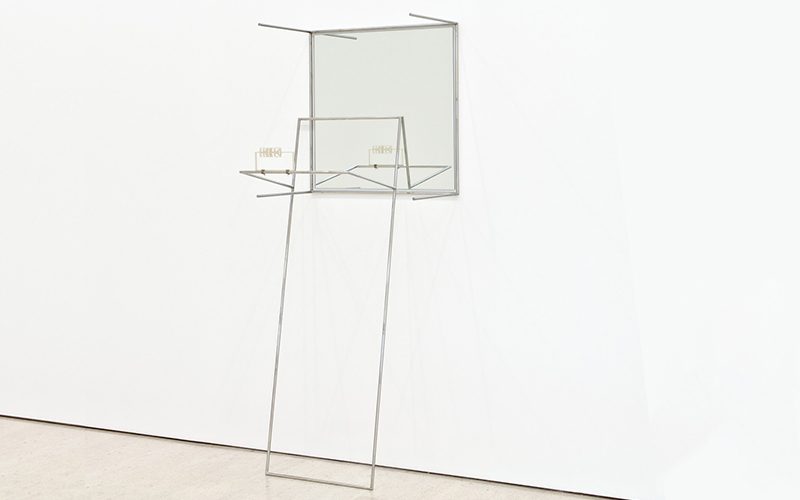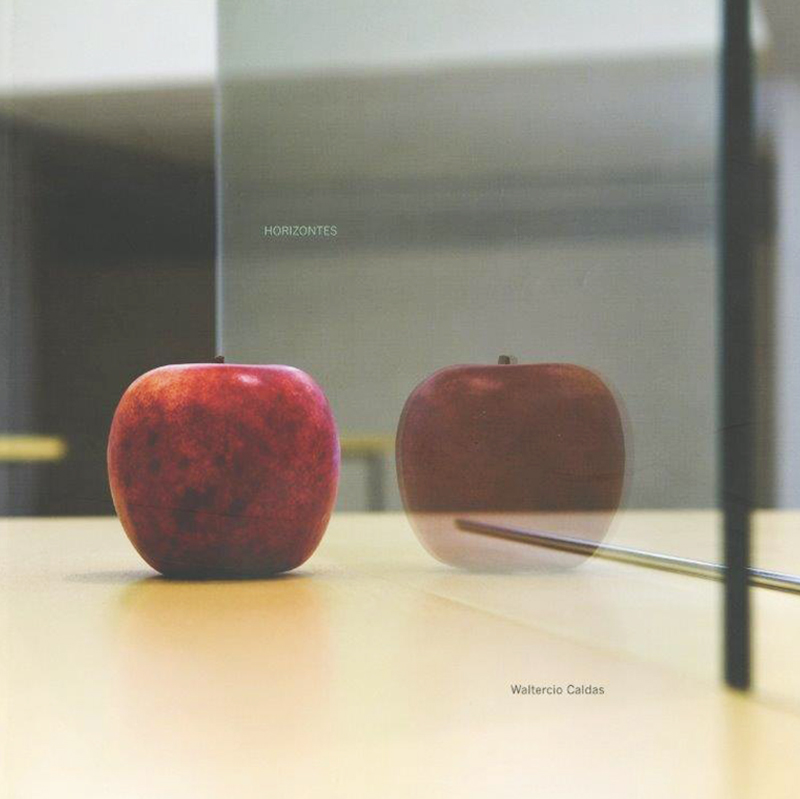Mirages in space

‘The objects of Waltercio Caldas are objects of “reflection”. They tend to open a chasm between that which one may see and/or touch and that which one thinks, which can be dizzying’, writes Nina do Vale, in 2001.
In the exhibition Beyond the Mirror, which I curated with Rosa Figueiredo in 2015, this work belonged to the fourth thematic section: Truth and lies within the reflection. In it, the artist carves the exclamation of all scientists, ‘EUREKA!’, into painted metal and places it in reverse in front of a mirror, in which we can also see our face, identifying the language with the being or putting it in the place of the being: the metaphor of a psychic inclination, in which the observer loses themselves in the visual and mental effect of what they find written on its surface.
The structure of mirrors in his work is a constant display of an almost immaterial physicality, in which the space for thought and lines of force of the objects dissolve into one another to suggest movement and opening. ‘From physics I extract only poetic suggestions of what the unknown could be. I read some physics texts as if they were poetry, as if I were testing the limits of written language,’ he tells us.
On 11 July 2008, Jorge Molder, the director of CAM at the time, and curator of the exhibition Waltercio Caldas. Horizontes [Waltercio Caldas: Horizons], asked me for a printed journal for the exhibition, to be ready on the day of its opening, 18 July, one week later. I worked hard to make what I thought was impossible possible, turning it into a reality.


At CAM, Waltercio Caldas (Rio de Janeiro, 1946) displayed various sculptures conceived for the exhibition, which occupied the space of the main nave of the museum. ‘These objects are like mirages in space. They are suspended (…). They belong to the world of things with the immateriality of mirages,’ wrote Paulo Venancio Filho in 1984, referring to the artist’s sculptures. According to José Thomaz Brum, ‘what ostensibly characterises the work of Waltercio Caldas is the precise style with which he brings about this suspension of forms and puts the space between parentheses.’ In the words of the artist, in 1994, ‘if the simple object no longer existed, the invention of the mirror could exhaust a whole humanity.’

In the journal I created in the space of a week, almost having to ‘bribe’ a printer, I provided many quotations from the artist alongside excerpts of critical texts. In relation to the expression of immateriality in his work it is worth recalling this one: ‘When I write “sculpture”, what I really want to say is “air”. When I write “air”, what I want to say is “body”. When I write “skin”, what I want to say is “presence”.’
Leonor Nazaré
Curator of the CAM
Curators’ Choices
The curators of the CAM reflect on a selection of works, which include creations by national and international artists.
More choices